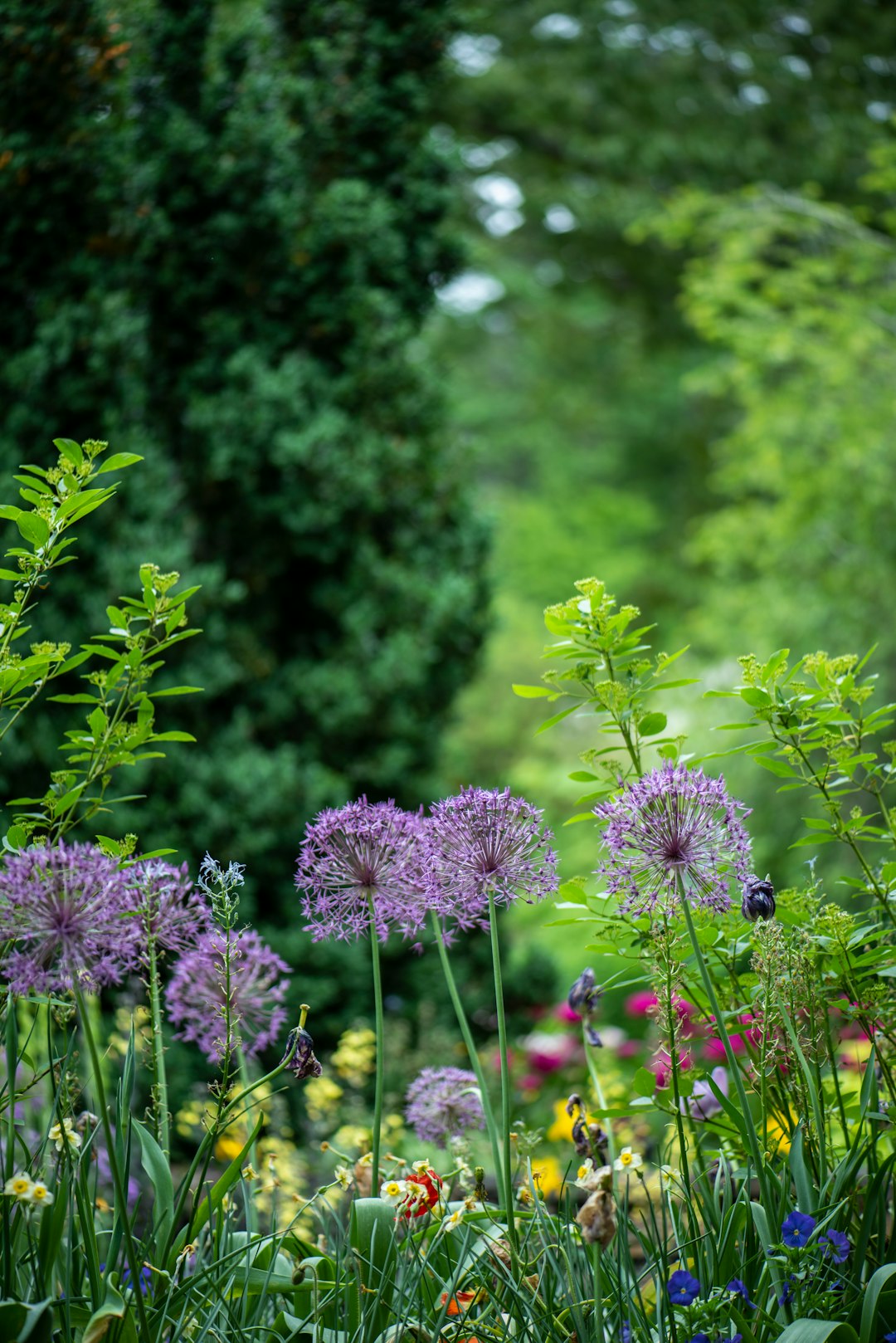Support our educational content for free when you purchase through links on our site. Learn more
Quick Answer: Community gardens can face various challenges that can hinder their success. Some common problems include lack of structure, gardener drop-out, theft and vandalism, and difficulties in fostering a sense of community. However, with proper planning, communication, and proactive solutions, these issues can be overcome, leading to thriving and successful community gardens.
Have you ever wondered why some community gardens flourish while others struggle to survive? 🤔 Community gardens can be a wonderful way to bring people together, promote sustainable living, and provide access to fresh produce. However, they can also face numerous challenges that can hinder their success. In this article, we’ll explore the common problems that community gardens encounter and provide practical solutions to help your garden thrive. So, let’s dig in and uncover the secrets to successful community gardening! 🌿
Table of Contents
- Quick Answer
- Quick Tips and Facts
- Background: The Importance of Community Gardens
- Problem 1: Lack of Structure
- Problem 2: Gardener Drop-out
- Problem 3: Theft and Vandalism
- Problem 4: Difficulties in Fostering a Sense of Community
- Problem 5: Limited Accessibility
- Problem 6: Lack of Resources
- Problem 7: Environmental Challenges
- FAQ
- Conclusion
- Recommended Links
- Reference Links
Quick Tips and Facts
- Community gardens provide numerous benefits, including promoting sustainable living, fostering community connections, and increasing access to fresh produce.
- Successful community gardens require proper planning, communication, and proactive solutions to overcome common challenges.
- Gardener drop-out, theft and vandalism, lack of structure, difficulties in fostering a sense of community, limited accessibility, lack of resources, and environmental challenges are common problems faced by community gardens.
- Solutions include implementing a structured garden management system, establishing clear guidelines and expectations, promoting community engagement, implementing security measures, providing educational resources, and adapting to environmental conditions.
Background: The Importance of Community Gardens

Community gardens play a vital role in creating sustainable and resilient communities. They provide a space for people to come together, learn about gardening, and grow their own food. These gardens not only beautify neighborhoods but also promote environmental stewardship and food security. By growing their own produce, community gardeners reduce their carbon footprint and gain access to fresh, nutritious food. Additionally, community gardens can serve as educational spaces, teaching people about sustainable gardening practices, biodiversity, and the importance of healthy eating.
Problem 1: Lack of Structure
One of the primary reasons community gardens may struggle is a lack of structure. Without clear guidelines and expectations, gardens can become disorganized and chaotic. This can lead to conflicts among gardeners and a lack of accountability.
Solutions
✅ Implement a structured garden management system: Establish a clear organizational structure with designated roles and responsibilities. This can include a garden committee or leadership team responsible for decision-making, communication, and overall garden management.
✅ Establish clear guidelines and expectations: Develop a set of garden rules and guidelines that outline expectations for gardeners. This can include rules regarding plot maintenance, communal areas, and shared resources. Clearly communicate these guidelines to all gardeners and ensure they understand and agree to abide by them.
✅ Promote community engagement: Encourage regular communication and collaboration among gardeners. This can be achieved through regular meetings, newsletters, or online platforms where gardeners can share updates, ask questions, and exchange gardening tips.
Problem 2: Gardener Drop-out
Gardener drop-out is a common issue in community gardens. Life can get busy, and volunteer work like community gardening is often one of the first commitments to slide when time becomes scarce. When gardeners stop showing up, their plots can become overgrown, inviting pests and detracting from the overall appearance of the garden.
Solutions
✅ Collect a maintenance deposit: Consider collecting a one-time maintenance deposit from gardeners. This deposit can be refunded if gardeners keep their plots in good order and fulfill their commitments to the garden. It serves as an incentive for gardeners to stay engaged and take responsibility for their plots.
✅ Institute a forfeiture policy: If a gardener abandons their plot for a specified period of time, the garden has the right to reassign the plot to another gardener. This ensures that all plots are actively maintained and utilized.
✅ Make commitments count: When gardeners join the community garden, have them commit to a certain amount of work per week or month. Keep track of attendance and have gardeners sign in to demonstrate their commitment. This helps maintain accountability and ensures that everyone is contributing to the garden’s success.
Problem 3: Theft and Vandalism
Theft and vandalism can be significant challenges for community gardens. Whether it’s passersby or even fellow gardeners, these acts can damage the garden and discourage participation.
Solutions
✅ Educate and communicate: Use signs and conversations to help people understand that the garden is not a place for free produce. Explain the purpose of the garden and the importance of respecting others’ hard work.
✅ Install fences and locked gates: Physical barriers can deter unauthorized access and reduce the risk of theft and vandalism. Install fences around the garden perimeter and consider using locked gates to control access.
✅ Mark tools and store them securely: Label communal tools with the garden’s name or logo to discourage theft. Store tools securely in a locked shed or storage area when not in use.
✅ Use lighting and security cameras: Adequate lighting and visible security cameras can help deter potential intruders. Install motion-activated lights and strategically place security cameras to cover vulnerable areas.
✅ Give back to the community: Consider growing a little extra produce to give away. Leave boxes of surplus produce outside the garden’s gate for passersby to enjoy. This can help foster goodwill and reduce the temptation for theft.
✅ Post a hotline: Clearly post a phone number or email address for reporting theft or vandalism. Encourage neighbors to report any suspicious activity they witness.
Problem 4: Difficulties in Fostering a Sense of Community
Creating a sense of community within a community garden can be challenging. Cultural differences, territorial feelings, and the simple act of getting to know one another can all breed tension and conflict.
Solutions
✅ Hold regular work days: Organize monthly work days where gardeners come together to work on communal tasks. This can help foster a sense of camaraderie and create opportunities for interaction.
✅ Hold regular meetings: Schedule regular meetings to discuss current events, goals, and any problems or concerns. This provides a platform for open communication and allows gardeners to have a voice in the garden’s decision-making process.
✅ Plan social gatherings: Organize social events and gatherings that are purely for fun. This can include potluck dinners, barbecues, or garden-themed parties. These events provide opportunities for gardeners to get to know each other on a more personal level.
✅ Share the garden with the public: Plan programs and events that are open to the public, such as workshops, gardening classes, or community festivals. This helps integrate the garden into the larger community and encourages participation from non-gardeners.
✅ Stay organized: Establish clear processes for conflict resolution and problem-solving. Encourage gardeners to work together to address any issues that arise and find mutually beneficial solutions.
Problem 5: Limited Accessibility
Limited accessibility can prevent some individuals from participating in community gardens. Physical barriers, lack of transportation, or language barriers can exclude certain community members from enjoying the benefits of gardening.
Solutions
✅ Create accessible pathways: Ensure that garden pathways are wide enough to accommodate wheelchairs, strollers, and individuals with mobility challenges. Use materials such as gravel or wood chips to create stable and accessible surfaces.
✅ Provide raised beds: Install raised beds to accommodate individuals who may have difficulty bending or kneeling. Raised beds can be built at varying heights to accommodate different needs.
✅ Offer transportation options: Explore transportation options for individuals who may have difficulty accessing the garden. This can include organizing carpools or partnering with local transportation services.
✅ Provide multilingual resources: Create educational materials and resources in multiple languages to ensure that language barriers do not exclude individuals from participating. Translate important garden documents and signage to promote inclusivity.
Problem 6: Lack of Resources
A lack of resources, such as tools, seeds, and educational materials, can hinder the success of a community garden. Limited funding or a lack of access to gardening resources can make it challenging for gardeners to maintain and improve their plots.
Solutions
✅ Seek community partnerships: Reach out to local businesses, organizations, and government agencies for support. Many companies are willing to donate tools, seeds, or other gardening supplies to community gardens.
✅ Apply for grants: Research and apply for grants specifically designed to support community gardens. Many organizations offer funding opportunities to help community gardens thrive.
✅ Organize fundraising events: Plan fundraising events to generate funds for the garden. This can include plant sales, garden tours, or community workshops. Use the funds raised to purchase necessary resources and improve the garden.
✅ Create a seed library: Establish a seed library within the community garden where gardeners can borrow seeds for planting. This promotes seed diversity and reduces the financial burden on individual gardeners.
Problem 7: Environmental Challenges
Community gardens are not immune to environmental challenges. Extreme weather conditions, pests, and soil quality issues can impact the success of a garden.
Solutions
✅ Adapt to local conditions: Choose plant varieties that are well-suited to the local climate and growing conditions. Consult with local gardening experts or agricultural extension offices for guidance on suitable plant choices.
✅ Implement pest management strategies: Use organic pest control methods to manage common garden pests. This can include companion planting, natural predators, or organic pest control products.
✅ Improve soil quality: Conduct soil tests to assess the nutrient levels and pH of the soil. Amend the soil as needed to ensure optimal growing conditions. Compost, organic fertilizers, and cover crops can help improve soil health.
✅ Implement water conservation practices: Install rain barrels or other water collection systems to reduce reliance on municipal water sources. Use mulch to retain moisture in the soil and minimize water evaporation.
FAQ

Why do community gardens fail?
Community gardens can fail due to various reasons, including lack of structure, gardener drop-out, theft and vandalism, difficulties in fostering a sense of community, limited accessibility, lack of resources, and environmental challenges. However, with proper planning, communication, and proactive solutions, these issues can be overcome, leading to successful community gardens.
Read more about “What Plants Can You Sell to Make Money? … 🌱💰”
What are the downsides to community gardens?
While community gardens offer numerous benefits, they can also have downsides. Some potential downsides include conflicts among gardeners, limited accessibility for certain individuals, challenges in maintaining communal areas, and the need for ongoing maintenance and organization. However, with proper management and community engagement, these downsides can be minimized.
Read more about “What are the Negatives of a Community Garden? … 🌱”
Do community gardens actually work?
Yes, community gardens can be highly successful when properly managed and supported. They provide opportunities for community engagement, promote sustainable living, and increase access to fresh produce. By fostering a sense of community and providing educational resources, community gardens can have a positive impact on individuals and neighborhoods.
Read more about “How are Urban Gardens Good for the Environment? … 🌱”
What makes a community garden successful?
Successful community gardens often have clear guidelines and expectations, active community engagement, effective communication, and proactive solutions to common challenges. They prioritize inclusivity, provide educational resources, and adapt to local conditions. A strong sense of community and collaboration among gardeners is also key to the success of a community garden.
Read more about “15 Reasons Why Joining a Community Garden Will Transform Your Life … 🌱”
Conclusion

Community gardens have the potential to transform neighborhoods, promote sustainable living, and foster a sense of community. However, they can face various challenges along the way. By implementing the solutions we’ve discussed, you can overcome these obstacles and create a thriving and successful community garden. Remember, with proper planning, communication, and proactive problem-solving, your garden can flourish and bring people together. So grab your gardening gloves, gather your community, and let’s make your community garden a vibrant and fruitful oasis! 🌻
Recommended Links
- Benefits of Community Gardens
- Community Garden Events
- Community Garden Policies
- Gardening for Beginners
- Garden Design Ideas
- What are the Negatives of a Community Garden? 2024 🌱

